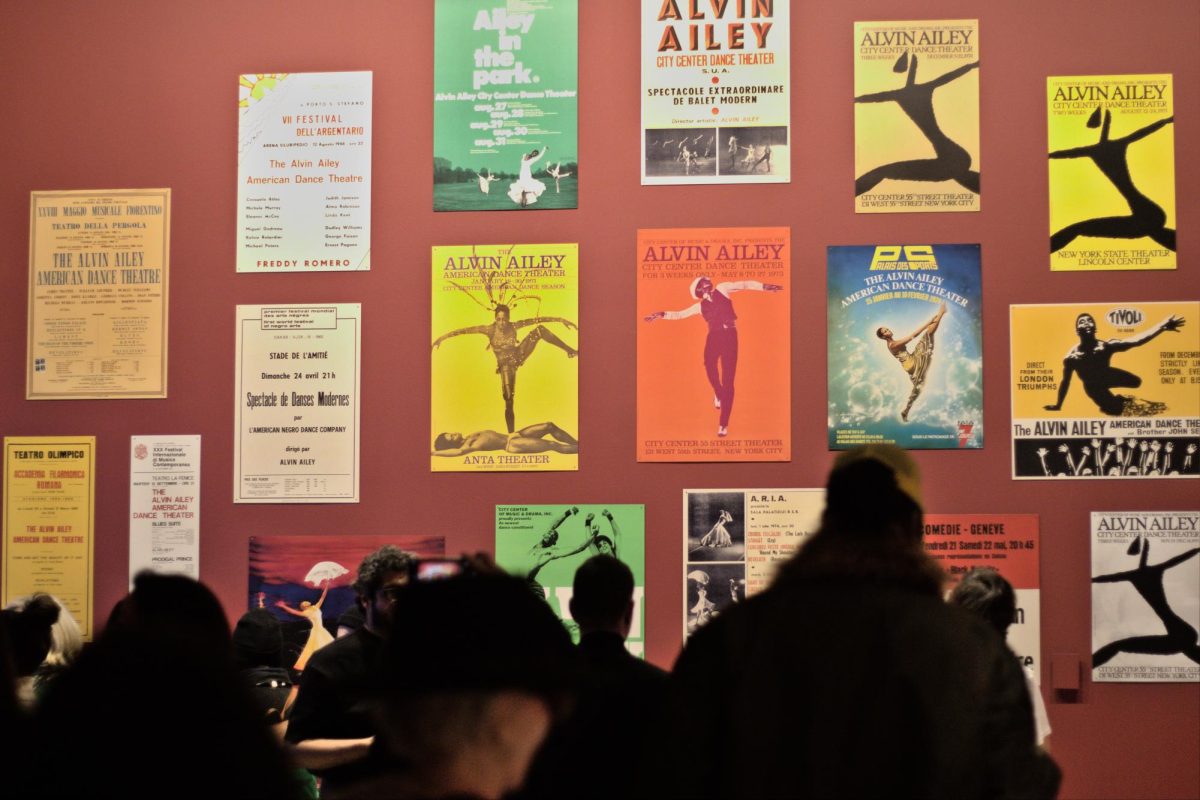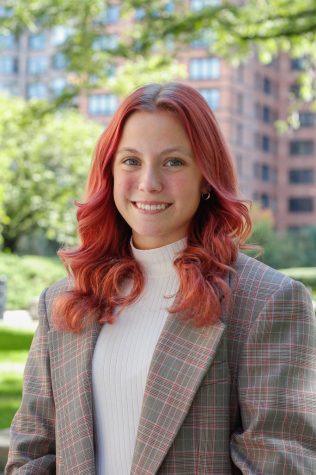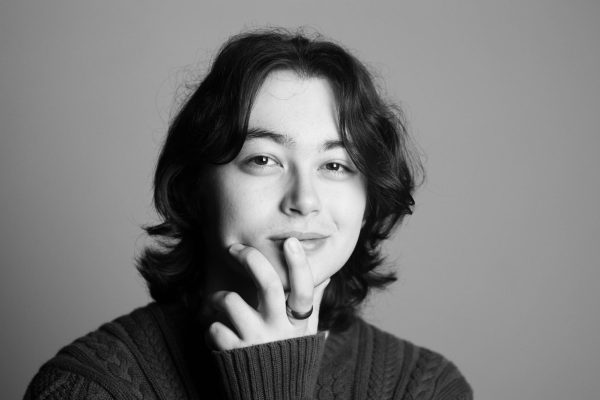Legacy, reach and representation are the pillars that give shape to “Edges of Ailey.” This exhibition, hosted by the Whitney Museum of American Art, opened on Sept. 25. It aims to honor the life of Alvin Ailey, and highlights the lasting impact of his company today. Equal parts solemn remembrance and vivid revival, this show exposes visitors to all aspects of Ailey.
If there is anything to know about Ailey, it is that his love of dance was anchored in his love of dancers. Ailey’s legacy is one of encouraging Black dancers to find the art within themselves. Ailey grew up when few opportunities existed to formally train in the arts, a problem exacerbated because of his race. He was largely self-taught and hoped his school would provide opportunities for others to follow.
“I want it to be easier than it was for me,” Ailey said in an interview for a PBS documentary.
“His whole emphasis is ‘I want to show my people how beautiful they are.’” Layla Barber, FCLC ’26
Layla Barber, Fordham College at Lincoln Center (FCLC) ’26, spoke on Ailey’s enduring legacy.
“He has so many works that are specifically dedicated to Black people, and as a celebration of the Black body,” Barber said. “His whole emphasis is ‘I want to show my people how beautiful they are.’”
The Fordham University and Alvin Ailey American Dance Theater (AAADT) BFA program is a shining example of the opportunity that Alvin Ailey dreamed of.
Through the collaborative program, students are able to take classes at Fordham while training intensively at AAADT. At the end of four years, students have received an education in dance and a degree that testifies to their hard work.
“Knowing that I get to have a bachelor’s degree after this, that shows my studies and dedication to this kind of thing is just really special, especially because Black people didn’t always have that opportunity,” Barber said. “It makes me really proud and I remember every day that that was not always the case, and I’m really grateful for it.”
The exhibition emphasizes Ailey’s appreciation for multimedia through the broad inclusion of many forms of art.
Jonah Riley, FCLC ’26, spoke fondly of how many of the instructors currently teaching in the Ailey/Fordham BFA program knew Ailey during his lifetime. They honor his memory by sharing anecdotes from their time together with the company’s current students.
“Every Ailey class … our teachers will talk about him here and there; how he valued feeling, how he valued what you told within your movement as you’re dancing,” Riley said. “Their interactions with him were so life changing … They think it’s important to share those conversations with us, so we can carry that on.”
Ailey’s love of Black artistry extended beyond the realm of dance. Prior to beginning dance at the age of 11, he pondered how else he might express himself. He had dreams of writing, drawing and painting as ways of showing his soul to the world. The exhibition emphasizes Ailey’s appreciation for multimedia through the broad inclusion of many forms of art.
Riley found this to be reflective of the diverse art forms celebrated at the AAADT.
“It’s not just Horton and it’s not just ballet. It’s also Graham and West African,” Riley said. “And then walking into the Whitney, you see all of the art mediums he was influenced by, whether that was a painting or musical theater or sculptures.”
At the gallery, there is Geoffrey Holder’s “Portrait of Carmen de Lavallade” from 1976. This glowing oil painting is used to represent Ailey’s profound appreciation for Black women, inspired largely by the close relationship he had with his mother, Lula Cooper. Having raised him on her own, Cooper inspired Ailey to challenge stereotypes that negated the beauty and potential of Black women.
Further into the galley is James Van Der Zee’s photograph “Marcus Garvey Rally” from 1924, signaling Ailey’s involvement in the fight for Black liberation. Both artists — Ailey and Van Der Zee — strove to produce beauty in the midst of social, physical and political threats.
Other pieces spoke to his fascination with and heavy reliance upon Black spirituality. Ailey was born in 1931 in Rogers, Texas. Spending his youth in a Southern Baptist Church gave rise to his love for gospel music, where he first leaned into intense emotional expression. Ailey included nods to baptisms, Sunday services and other Church traditions throughout his choreography. One notable example is his famous piece “Revelations.”
Barber shared that “Revelations” — which premiered 65 years ago on Jan. 31, 1960 — remains celebrated by AAADT and the community.
“In training at Ailey … they really emphasize the importance of the heritage and history behind everything that we’re doing,” Barber said. “That’s at the core of the company. They’re still performing ‘Revelations.’”
The exhibition emphasizes Ailey’s appreciation for multimedia through the broad inclusion of many forms of art.
Many Black creatives from whom Ailey drew inspiration and collaborated are also spotlighted throughout the exhibition. Notable figures include pianist Duke Ellington, singer and musician Nina Simone, and dancer and choreographer Katherine Dunham.
Alvin Ailey died in 1989 due to AIDS-related complications. The exhibit runs a touching yet harrowing video of AAADT dancers wishing him well during one of his hospital stays. The tape shows dancers laughing while they imitate how Ailey would be correcting their technique if he were back in the studio. At other moments, dancers offer tender “I miss you’s,” and implore Ailey to come back as soon as possible. Their love for him is palpable and draws a hush over the otherwise lively gallery. “AIDS Memorial Quilt with Alvin Ailey panel” by Anonymous pays further tribute to Ailey’s fight against AIDS.
On Friday nights, visitors can reflect on everything they learned from the exhibit while doing some dancing of their own. As part of their “Free Friday Nights” program, the Whitney hosts a DJ and clears out a dance floor on the entrance level. Hundreds of patrons released their inhibitions to dance and sing. Shining outfits glimmered in the flashes from a photographer’s camera. Laughter and squeaking shoes often overpowered the sound of the music.
“I feel like everyone in the world is artistic and creative,” Riley said. “It’s just a matter of things you do in your life to bring that out … and if you even let yourself bring that out.”
This kind of free expression, where people are moved by the art within them, is something Ailey cherished.
He once said, “I love the idea of people coming and working together . . . (we) start with an empty space, and a body or two, and we say, ‘Carve this space.’”
Edges of Ailey will be on display until Feb. 9 at the Whitney. The exhibition was created by the Whitney Museum of American Art alongside the Alvin Ailey Dance Foundation. Adrienne Edwards and CJ Salapare curated the exhibition.



